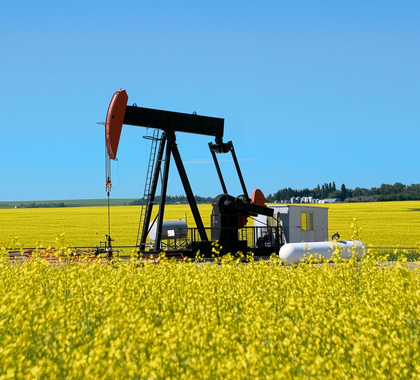The Bureau of Ocean Energy Management (BOEM) and the Bureau of Safety and Environmental Enforcement (BSEE) have lifted a moratorium placed on hydraulic fracturing, also called “fracking,” off the coast of California and released a jointly prepared programmatic environmental assessment that says the practice has no significant environmental impact.
“Drawing on the best available science,” according to BOEM Director Abigail Ross Harper, the study evaluated the 23 current oil and gas drilling platforms in operation on the Outer Continental Shelf off the Golden State’s coast.
“The [environmental assessment] provides information and analysis on the use of well stimulation treatments in federal waters offshore California … [and] the comprehensive analysis shows that these practices, conducted according to permit requirements, have minimal impact,” said Harper.
Anti-fracking activists were not pleased with the decision. “Everything that we know about fracking chemicals, and increasing oil spill risk, and the increase earthquake risk – fracking makes people sick and it pollutes our oceans,” said Miyoko Sakashita, oceans director at the Center for Biological Diversity, which brought forward one of the lawsuits against the federal government that triggered the review by BOEM and BSEE.
Despite Sakashita’s warnings, scientific evidence shows these concerns are generally unwarranted. The BOEM-BSEE review found no “noticeable impacts on [the] ambient air quality of the project area and adjacent coastal counties, or to noticeably contribute to climate change.” The review also found fracking would have “negligible impacts” on benthic habitats and biota, fish and marine mammals, marine and coastal birds, sea turtles, and recreational and commercial fisheries, as well as “no impact of special concern” on archaeological resources, recreation and tourism, and “minority and low-income populations.”
In a multi-year study conducted by the U.S. Environmental Protection Agency, widely considered to be the most exhaustive research to date on the subject of hydraulic fracturing, researchers found fracking has not led to systemic impacts on drinking water. “The number of cases where drinking water resources were impacted is small relative to the number of hydraulically fractured wells,” wrote the authors of the report.
The actual hydraulic fracturing process itself, has been used in at least one million wells nationwide since 1947, and seismically is incredibly safe. Referencing a 2013 Durham University study, The Heartland Institute Research Fellow Isaac Orr notes in “nearly 200 instances of manmade earthquakes studied [since 1929], hydraulic fracturing was found to have been responsible for three earthquakes large enough to be felt on the surface.”
The author of that study went on to conclude, “Hydraulic fracturing is not a significant mechanism for inducing felt earthquakes. … [It is] extremely unlikely any of us will be able to feel an earthquake caused by fracking.” Another major EPA study found injection wells do not cause earthquakes and “very few” earthquakes produced by those that do can be felt by humans.
The hydraulic fracturing process has transformed the energy outlook of the United States, and fracking has already been utilized off the California coast for many years in a safe, environmentally responsible manner. Twenty-one wells have been safely in operation offshore since 1982, and the Golden State already has the strictest fracking regulations in the country. The report’s conclusions demonstrate California’s regulatory bodies have enacted sufficiently protective standards to ensure responsible energy development while protecting the environment. The study also demonstrates the federal moratorium was unnecessary, overly restrictive, and not based on the best-available scientific evidence.
The following documents provide more information about hydraulic fracturing.
Fracking Facts: The Science, Economics, and Legal Realities
https://heartland.org/publications-resources/publications/fracking-facts-the-science-economics-and-legal-realities
Hydraulic fracturing, commonly known as fracking, has been employed in the United States since the 1940s. Although innovation has improved the precision of the process, the essentials are the same. Utilizing horizontal drilling, a mixture of mostly water, sand, and trace amounts of chemicals, are used to create fissures in underground shale deposits to allow oil and natural gas trapped in hard rock to move toward the surface to be collected. Activists have blamed fracking and the processes associated with it for emissions of pollutants, earthquakes, and even groundwater contamination, though independent evidence consistently shows these allegations to be false. Leigh Thompson of the Texas Public Policy Foundation argues the evidence supporting fracking bans looks slim when attention is drawn to the facts.
Assessment of the Potential Impacts of Hydraulic Fracturing for Oil and Gas on Drinking Water Resources
https://heartland.org/policy-documents/assessment-potential-impacts-hydraulic-fracturing-oil-and-gas-drinking-water-reso-0
This assessment from the Environmental Protection Agency provides a review and synthesis of available scientific literature and data to assess the potential impact hydraulic fracturing may have on the quality or quantity of drinking water resources, and it identifies factors affecting the frequency or severity of any potential impacts. The scope of this assessment is defined by the hydraulic fracturing water cycle, which includes five main activities: water acquisition, chemical mixing, well injection, flowback and produced water, and wastewater treatment and waste disposal.
Hydraulic Fracturing a Game-Changer for U.S. Energy and Economies
https://heartland.org/publications-resources/publications/hydraulic-fracturing-a-game-changer-for-us-energy-and-economies
In this Policy Study from The Heartland Institute, Heartland Research Fellow Isaac Orr explains the advantages and disadvantages of smart drilling and its alternatives. Orr reviews the background and potential of hydraulic fracturing in the United States and puts that potential in the context of the supply of and demand for oil and gas. He addresses the environmental impacts of hydraulic fracturing, both positive and negative, as well as the public safety issues raised by activists, such as potential harm to drinking water supplies. Orr also discusses how oil and gas production is regulated at the state and national levels and suggests appropriate policies for the industry.
Fracking and Earthquakes
https://heartland.org/publications-resources/publications/fracking-and-earthquakes?source=policybot
Fracking is responsible for some of the greatest growth in oil and gas production the United States has ever experienced. Yet, as U.S. energy extraction increases, so have concerns about the safety of fracking, with The New York Times linking the practice to “Scores of earthquakes.” Research shows, however, the risk of earthquakes caused by fracking is minimal and can be fixed with modest siting regulations, bonding requirements, and wastewater recycling. Jillian Melchoir of the Independent Women’s Forum writes that it is essential to understand what the science is actually revealing about energy extraction and induced seismicity and to create balanced public policy that allows safe energy extraction to continue.
Injection Wells and Earthquakes: Quantifying the Risks
https://heartland.org/publications-resources/publications/injection-wells-and-earthquakes-quantifying-the-risk
This report from StatesFirst, a partnership between the Ground Water Protection Council and the Interstate Oil and Gas Compact Commission, states data from the U.S. Geological Survey and several peer-reviewed studies show out of an estimated 40,000 disposal wells across the United States, only 218 of them have been linked to or suspected of being a possible cause of seismicity. This means only 0.15 percent of all Class II injection wells and 0.55 percent of all federally regulated disposal wells in the United States have been tangentially associated with a seismic event of any size.
Managing the Risk of Hydraulic Fracturing: An Update
https://heartland.org/publications-resources/publications/managing-the-risks–of-hydraulic-fracturing-an-update?source=policybot
This study from the Fraser Institute shows research on the safety of hydraulic fracturing indicates the risks posed by fracking, such as induced seismicity and ground water contamination, are readily manageable with available technologies and best practices.
Hydraulic Fracturing a Game-Changer for U.S. Energy and Economies
https://heartland.org/publications-resources/publications/hydraulic-fracturing-a-game-changer-for-us-energy-and-economiesm The Heartland Institute, Heartland Research Fellow Isaac Orr explains the advantages and disadvantages of smart drilling and its alternatives. Orr reviews the background and potential of hydraulic fracturing in the United States and puts that potential in the context of the supply of and demand for oil and gas. He addresses the environmental impacts of hydraulic fracturing, both positive and negative, as well as the public safety issues raised by activists, such as potential harm to drinking water supplies. Orr also discusses how oil and gas production is regulated at the state and national levels and suggests appropriate policies for the industry.
Betty Grande: Fracking and Earthquake Misconceptions
https://heartland.org/multimedia/podcasts/bette-grande-fracking-and-earthquake-misconceptions
In this edition of the Heartland Daily Podcast, Research Fellow Isaac Orr and Research Fellow Bette Grande discuss earthquakes and their relationship with hydraulic fracturing. Grande also gives the listeners an inside look at the state of oil production in North Dakota in the wake of falling oil prices.
Hydraulic Fracturing: Critical for Energy Production, Jobs, and Economic Growth
https://heartland.org/publications-resources/publications/hydraulic-fracturing-critical-for-energy-production-jobs-and-economic-growth
Increased energy production on private lands in the United States has been one of the most promising economic success stories in recent years. A large part of the success is due to an energy-extraction process known as hydraulic fracturing. Misconceptions about hydraulic fracturing, also called fracking, abound. The Heritage Foundation’s Nicolas Loris explains hydraulic fracturing is safe when regulated effectively and says fracking greatly increases the nation’s energy production, thus promoting job creation.
Potential Injection-Induced Seismicity Associated with Oil & Gas Development: A Primer on Technical and Regulatory Considerations Informing Risk Management and Mitigation
https://heartland.org/publications-resources/publications/potential-injection-induced-seismicity-associated-with-oil–gas-development-a-primer-on-technical-and-regulatory-considerations-informing-risk-management-and-mitigation
In an effort to eliminate induced earthquakes from wastewater disposal wells, state regulators, geologists, seismologists, industry, and environmental groups worked together to create this 148-page report detailing how earthquakes can be caused and the best ways to mitigate the risks associated with fluid disposal.
Triggered Earthquakes and Deep Well Activities
https://heartland.org/publications-resources/publications/triggered-earthquakes-and-deep-well-activities
Craig Nicholson and Robert L. Wesson argue historical data regarding oil and natural gas production are important for current discussions of the disposal of wastewater from hydraulic fracturing and conventional oil and gas operations. As scientists gain a better understanding of what is causing the new wave of seismic activity, they will have a better idea of how to prevent it.
Nothing in this Research & Commentary is intended to influence the passage of legislation, and it does not necessarily represent the views of The Heartland Institute. For further information on this and other topics, visit the website of Environment & Climate News at https://heartland.org/Center-Climate-Environment/index.html, The Heartland Institute’s website at http://heartland.org, and PolicyBot, Heartland’s free online research database, at www.policybot.org.
The Heartland Institute can send an expert to your state to testify or brief your caucus; host an event in your state; or send you further information on a topic. Please don’t hesitate to contact us if we can be of assistance! If you have any questions or comments, contact Nathan Makla, Heartland’s state relations manager, at [email protected] or 312/377-4000.




